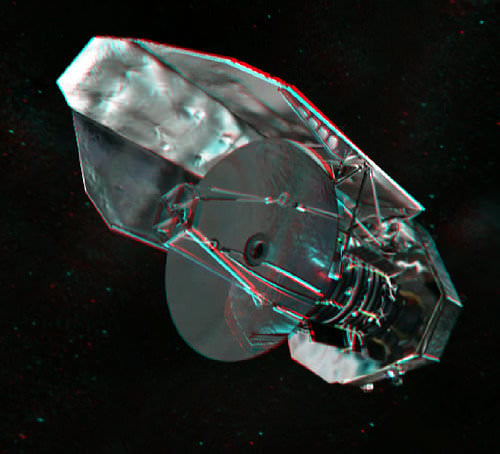[/caption] Sometimes, in astronomy, the name of a thing describes it well; a parabolic mirror is, indeed, a mirror which has the shape of a parabola (an example of a name that does not describe itself well? How about Mare Nectaris, "Sea of Nectar"!). Actually, it's a circular paraboloid, the 3D shape you get by rotating a parabola (which is 2D) around its axis.
The main part of the standard astronomical reflecting telescope – the primary mirror – is a parabolic mirror. So too is the dish of most radio telescopes, from the
Lovell telescope
at Jodrell Bank, to the telescopes in the
Very Large Array
; note that the dish in the Arecibo Observatory is not a parabolic mirror (it's a spherical one). Focusing x-ray telescopes, such as Chandra and XMM-Newton, also
use nested parabolic mirrors
… followed by nested hyperbolic mirrors.
Why a parabolic shape? Because mirrors of this shape reflect the light (UV, IR, microwaves, radio) from distant objects onto a point, the focus of the parabola. This was known in ancient Greece, but the first telescope to incorporate a parabolic mirror wasn't made until 1673 (by Robert Hooke, based on a design by James Gregory; the reflecting telescope Newton built used a spherical mirror). Parabolic mirrors do not suffer from spherical aberration (spherical mirrors cannot focus all incoming, on-axis, light onto a point), nor chromatic aberration (single lens refracting telescopes focus light of different colors at different points), so are the best kind of primary mirror for a simple telescope (however, off-axis sources will suffer from coma).
The Metropolitan State College of Denver has a cool animation of how a parabolic mirror focuses a plane wave train onto a point (the focus).
Universe Today has many articles on the use of parabolic mirrors in telescopes; for example Kid's Telescope, Cassegrain Telescope,
Where Did the Modern Telescope Come From?
,
Nano-Engineered Liquid Mirror Telescopes
,
A Pristine View of the Universe … from the Moon
,
Largest Mirror in Space Under Development
, and
8.4 Metre Mirror Installed on Huge Binoculars
.
Telescopes, the Next Level
is an excellent Astronomy Cast episode, containing material on parabolic mirrors.
 Universe Today
Universe Today
